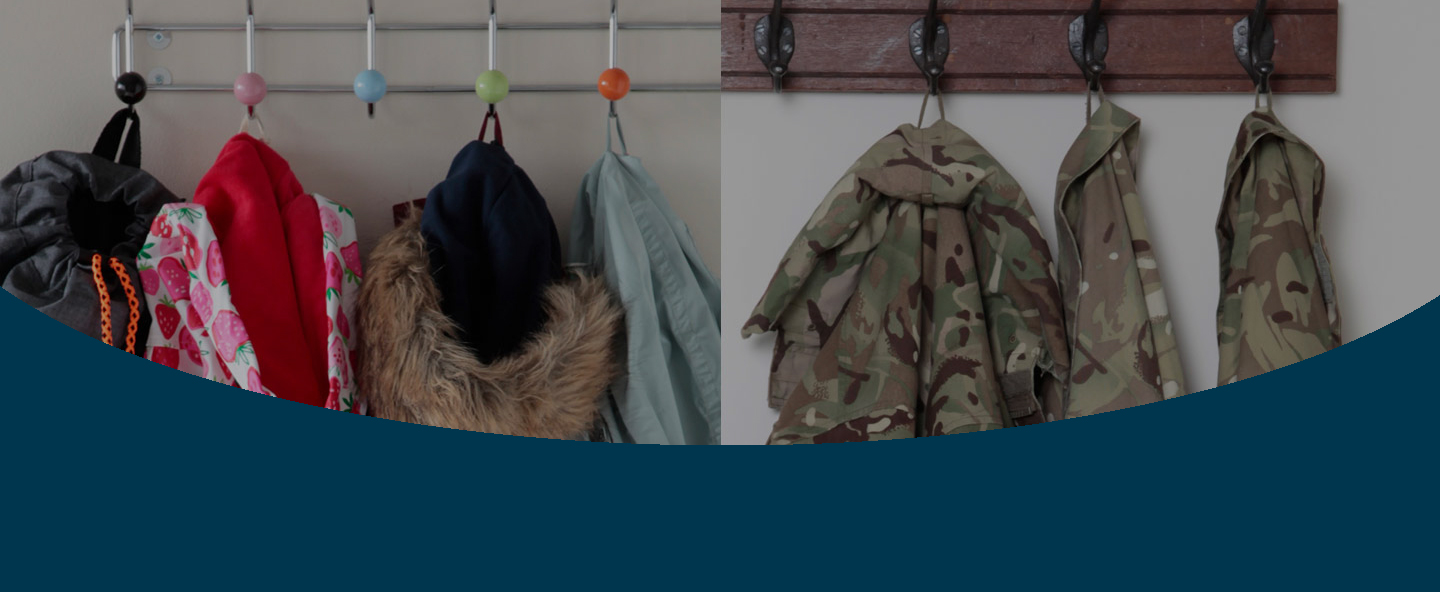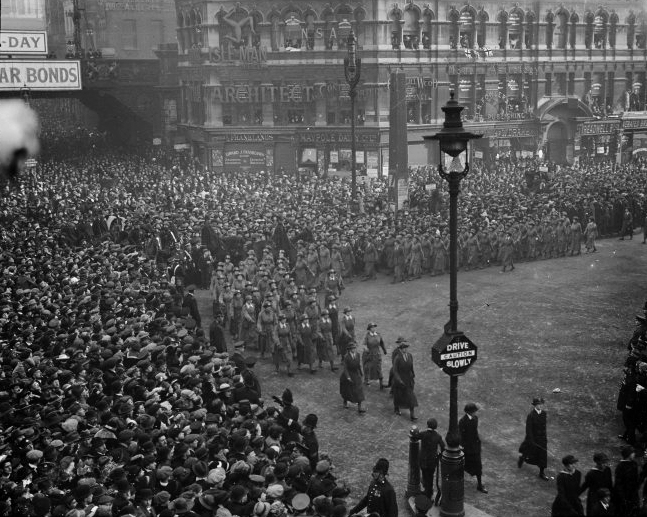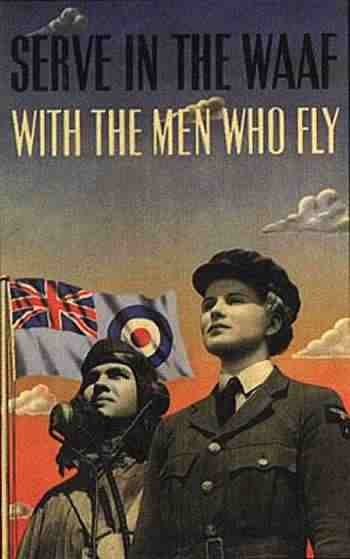
March is Women’s History Month, which means events and celebrations being held all over the planet with the aim of celebrating the achievements of 50% of the population. For many years the military was seen as being an area in which men ruled supreme. The demands of the First and Second World Wars forced a shift in this perception, and modern notions of equality have gradually come to play a part in all aspects of the UK military.
The women who, today, can look forward to rising through the ranks on a par with their male counterparts owe a great deal to those who originally blazed a trail. These are the pioneers who were determined to serve their country when it was needed most, and who helped to drive the creation of bodies like the Women’s Army Auxiliary Corps (WAAC) , the Women’s Royal Naval Service (WRNS) and the Women’s Auxiliary Air Force (WAAF).
WAAC
By National Library NZ on The Commons – originally posted to Flickr as The WAACs marching in London at the end of World War I, 1918, Public Domain, Credit
57,000 women joined the WAAC during World War I, with duties in the following areas: Cookery, Clerical, Mechanical and Miscellaneous. Although they were not granted full military status, the fact that the women were often stationed close to the front line placed them at as much risk as their male counterparts. The bombing of a trench at Abbeville, France in May 1918 underlined this point in the starkest possible terms, as it claimed the lives of eight women working there. Despite not being granted full military status, the women were given full military funerals, complete with a Royal Flying Corps flypast.
By the Second World War, the number of women engaged in active service in bodies such as the Auxiliary Territorial Service had risen to well over half a million. The good news for those seeking inspiration from the heroines of the past is that detailed archives are available in which the women explain, in their own words, just what their day to day experience of life in the forces entailed.
ATS
Mary Latham, 18 year old hairdresser from Chorley
“At Caister, near Yarmouth, 25 A.T.S.s were killed by machine-gun fire. The enemy aircraft flew over in the early morning at sunrise, when it was impossible to see them, and peppered the coast with gun-fire. It was a frightening sight to see Focke Wulfs diving down while we tried to pay our respects, standing to attention during the playing of the Last Post, to those who had been killed.
In 1943/44 we were posted to Southern Command. The Batteries at Plymouth were fully operational with search-lights and 4.5 inch guns. Here we saw a lot of action as the German planes bombarded Plymouth and Devonport docks.”
WRNS
Kath Dooley nee Galloway, volunteered aged 17 years:
“So I was demobbed, back to civvy street having experienced things only war service can bring, comradeship, steering HMS London, riding with the Aden Protectorate Levy both on camels and horses, leave in Asmara in one of Mussolini’s holiday homes, bugs, prickly heat, plagues of locusts, sand storms, being a guest at Government House (there sitting on a sofa covered in the same material as my evening dress, material being in very short supply), fishing in the Indian Ocean in a Dhow but above all…..Comradeship.”
Mrs Joan Baker, training in 1941:
“A short time later, we took part in an Active Defence Exercise, one dark morning at about 2 or 3 a.m. The Duke of Cornwall’s Light Infantry, from Bodmin, made a raid on our Station, attempting to gain control, and we Wrens were in a pillbox with our rifles and blank cartridges, as part of the defence force. There were official referees there, and they judged that we had taken some prisoners, who were led past us, expressing shock at seeing women, in a way which I’ll leave to your imagination.”
A WRNS rating during the Second World War. Credit
WAAF
Molly Wood, radio operator
“In 1944, I was still at Penrhos and we were on coastal frequency. I heard a babble of voices over the airwaves, but continued landing local aircraft. Suddenly, the door flew open, an officer came in and I was told to get off the airwaves and change frequency, as I was interfering with the commands for the D-Day landings!”
The experiences of these women came to form part of the movement which sees all areas of the military open to everyone, regardless of gender. If you were part of this phenomenon yourself, or know someone who was, such as a mother or grandmother, the following organisations offer the chance for veterans to get involved, reminisce, and relive the contributions they made to both the defence of the UK and the onward march of women:
Further reading
The Association of Wrens
Women’s Royal Army Corp Association
Women’s Auxiliary Air Force Association
Quotes taken from: source




